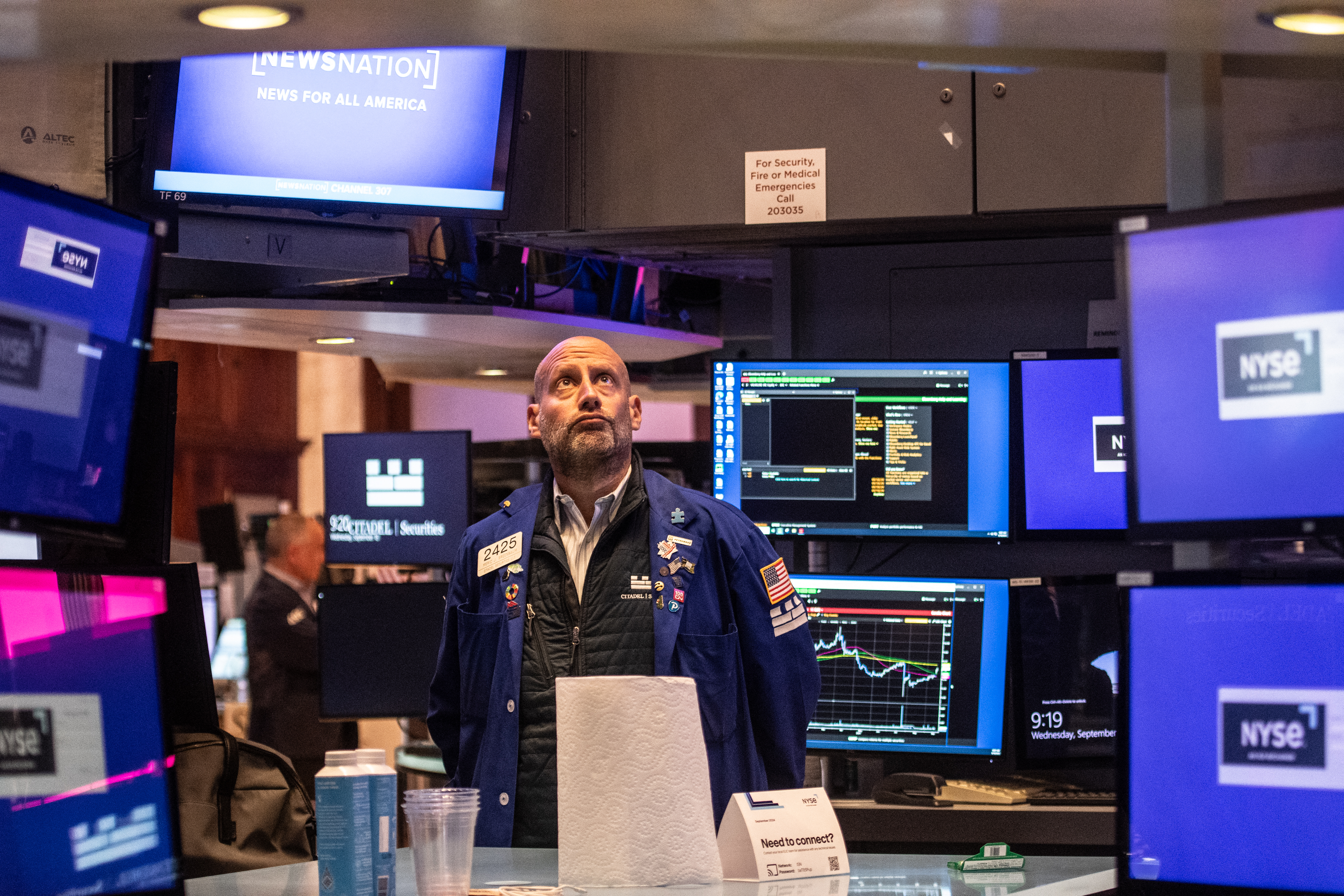Wall Street jumps with tech stocks in the lead

NEW YORK: Wall Street rallied on Thursday with the S&P 500 hitting another intraday record high after the Federal Reserve kicked off its easing cycle with half-a-percentage point reduction and forecast more cuts were on the horizon. Rate-sensitive growth stocks that have led much of this year’s rally rose. Microsoft added 2 percent, Tesla gained 4.2 percent and Apple advanced 2.6 percent.
Semiconductor stocks such as Nvidia rose 4.7 percent, while Advanced Micro Devices gained 3.5 percent and Broadcom added 3.8 percent, sending the Philadelphia SE Semiconductor Index up 3.6 percent. The Russell 2000 index also rose 1.7 percent with the broader market, as a lower interest environment could mean lower operating costs and greater profits for credit-dependent companies.
At 09:46 am, the Dow Jones Industrial Average rose 391.24 points, or 0.94 percent, to 41,894.34, the S&P 500 gained 72.37 points, or 1.29 percent, to 5,690.63 and the Nasdaq Composite gained 377.68 points, or 2.15 percent, to 17,955.01. Nine out of the 11 S&P 500 sectors gained, led by tech stocks with a 2.8 percent rise, while utilities were the biggest laggards. After delivering its super-sized verdict on Wednesday, the Fed forecast rates to fall by another 50 bps by year-end and unveiled macroeconomic projections that analysts say reflect a goldilocks scenario, where growth is steady and inflation and unemployment stay low. Data on the day showed jobless claims for the week ended Sept. 14 stood at 219,000, lower than economists’ estimates of 230,000.
“There’s a delayed reaction to the Fed’s rate cut ... the claims came in low, so it’s only going to help fuel the idea that a soft landing is in play,” said Ross Mayfield, investment strategist at Baird. “The guidance for plenty more cuts by the end of 2025 should open up (rate-sensitive) sectors to reengage and expand.” Traders now see a 63.1 percent chance that the central bank will lower interest rates by 25 basis points at its November meeting, as per the CME Group’s FedWatch tool.
BofA Global Research now anticipates a total of 75 bps rate cuts by the end of this year, compared with 50 bps forecast earlier. Market reaction in the aftermath of the decision was muted, with all the three indexes closing slightly lower in the previous session. However, data going back to 1970 from Evercore ISI showed the S&P 500 has posted an average 14 percent gain in the six months following the first reduction of a rate-cutting cycle. September has generally been a disappointing month for US equities with the S&P 500 notching an average loss of 1.2 percent since 1928. — Reuters
















